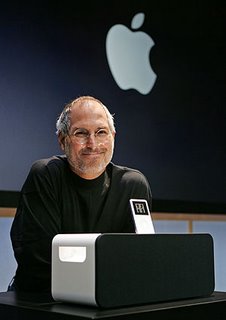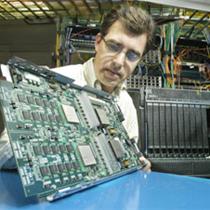New iMac Mini
 According to Steve Jobs, "It's home stereo reinvented for the iPod age".
According to Steve Jobs, "It's home stereo reinvented for the iPod age".Today Apple Computer Inc. introduced a home stereo and new Mac Mini PC designed to give the company a bigger foothold in living rooms. The iPod home stereo system will sell for $349 and goes on sale today. The Mac Mini with chips from Intel Corp. will be two to five times faster, Chief Executive Officer Steve Jobs said today at the company's Cupertino, California, headquarters.
The two products signal Jobs wants a bigger role in home entertainment. The new Mac Mini also includes Apple's Front Row software, already found on the newest iMacs, so users can connect it to their televisions and control their music, videos, or photos with a remote control from across the room. An added feature of the Front Row software will let users locate and share media content from other computers within a local wireless network. This means a user can play songs or stored TV shows that are pulled off a computer in another room in the house.
With the iPod Hi-Fi system, users can dock their portable players into the speakers and use a remote control to operate it from afar. That means there's no longer a need for a cabinet full of CDs, Apple Chief Executive Steve Jobs said.
The $599 Mac Mini has Intel's 1.5 GHz Intel Core Solo - a micro chip with a single core - 512 MB of memory and 60 GB hard disk drive. The $799 Mac Mini comes with Intel's 1.67 GHz Core Duo - a chip with two cores - 512 MB of memory and a 80 GB hard disk drive. Both versions have Gigabit Ethernet ports for transferring data much faster; four USB 2.0 ports for accessories like keyboard, mouse and iPods; and built-in Airport Express for wireless networking.



